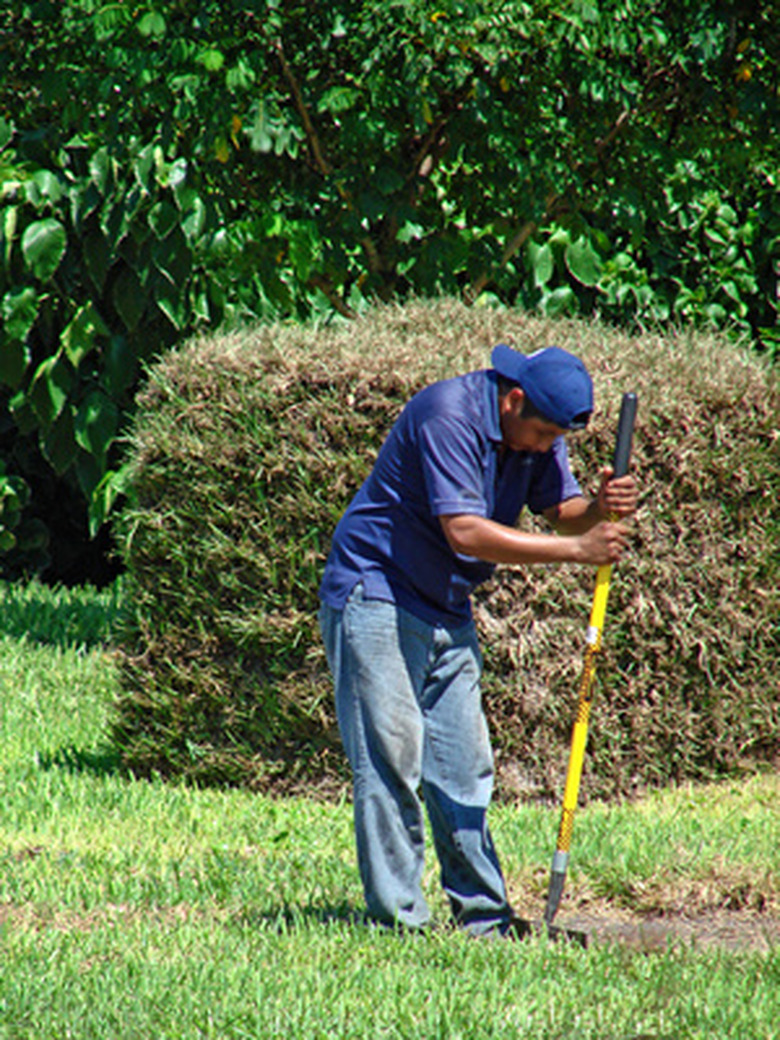How To Kill Water Grass
Water grass (Paspalum dilatatum), is a tall perennial warm-season grass that commonly invades lawns. If you find tufts of water grass growing in your turf, there are several effective control methods that you can use to effectively eradicate it. But the best way to be rid of water grass for good is to improve the health of your lawn. Regular watering, mowing and fertilization will create densely growing turf that will resist weed invasions.
Step 1
Dig clumps of water grass up with a shovel. Remove its root system as well as its foliage (even small sections of roots left behind can regenerate). This is the safest method for removing water grass in lawns. Because this is a grassy weed, any herbicide formulated to kill it will also kill the surrounding grass.
- Water grass (Paspalum dilatatum), is a tall perennial warm-season grass that commonly invades lawns.
- If you find tufts of water grass growing in your turf, there are several effective control methods that you can use to effectively eradicate it.
Step 2
Stop water grass seed from spreading to new areas. Re-seed any bare spots in your lawn, including those left behind by the water grass you just dug. Spread black plastic mulch or landscape fabric over garden areas to prevent the seed from establishing itself there.
Step 3
Monitor your lawn for re-growth. If you can catch sprouting water grass before it matures and sets seed in late spring/early summer, you can kill the next generation of water grass before it establishes itself.
Kill Old Grass
Dig out grasses with a spade or cut large grassy areas into strips with a sod cutter, which you can often rent at a rental supply store. For larger areas, use a backpack sprayer and a glyphosate concentrate. Wear protective clothing, face mask and goggles. Mow the grass as short as possible, then moisten the soil with 1 inch of water. Rake the loose debris and discard or compost. Repeat several times until all the grass is removed.
- Stop water grass seed from spreading to new areas.
- Mow the grass as short as possible, then moisten the soil with 1 inch of water.
Tip
If there are too many clumps of water grass in your lawn to dig up, spray them with a postemergent herbicide that contains MSMA or CMA or any postemergent herbicide listed for use on crab grass. Preemergent crabgrass herbicides can also be used to prevent water grass seed from germinating. Follow the manufacturer's instructions when applying herbicides to your lawn or garden. Clean your mower blades after each use to prevent spreading water grass to new areas.
References
- University of California: Dallisgrass
- University of California Agriculture and Natural Resources: Grass Removal Methods
- University of California Agriculture and Natural Resources: How Much of Your Lawn is Affected?
- University of California Agriculture and Natural Resources: Kill the Existing Turf and Weeds
- Popular Mechanics: 6 Weeks To a Perfect Lawn
